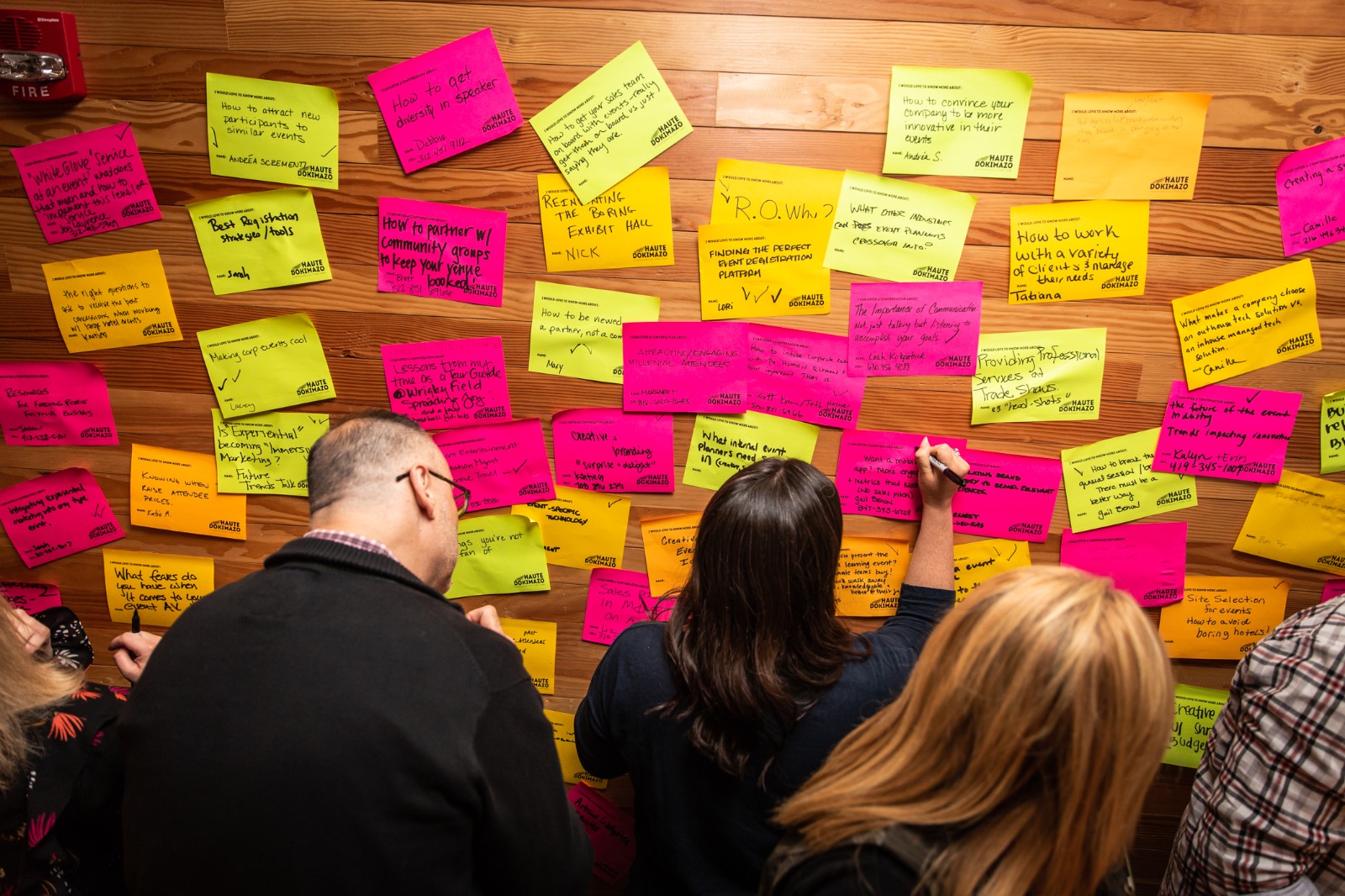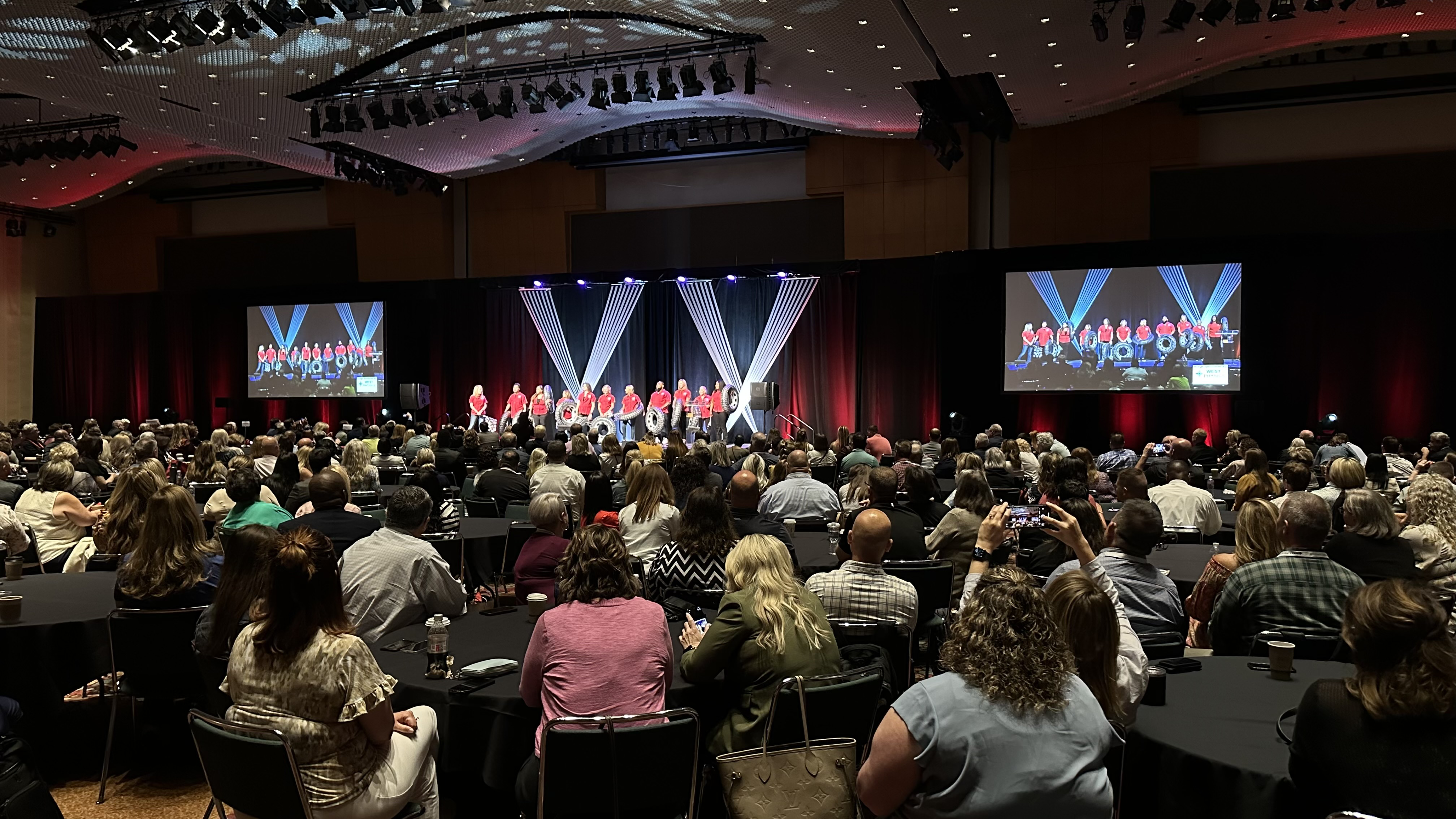Breaking the Mold: How ‘Spontaneity’ is Revolutionizing Event Experiences
Transforming passive attendees into active collaborators through the power of impromptu ideation.
By Matt Laws
You're at a conference, sitting through yet another PowerPoint presentation, when suddenly the facilitator announces a 45-minute think tank session. Within minutes, you find yourself huddled with five strangers, tackling a real industry challenge, and generating solutions that could actually change your field. Your energy is through the roof, connections are forming organically, and for the first time all day, you're not checking your phone.
This is the magic of collaborative sessions.
Now imagine planning a Spontaneous Think Tank™ into your agenda for more of these collaborative sessions and fewer “sit and get” beat-downs.
But here’s the trick: there’s nothing “impromptu” about a truly transformative Spontaneous Think Tank.
Despite what some might say, these aren’t chaotic brainstorming circles that pop up like mushrooms after a rainstorm. They’re highly engineered bursts of brilliance: crowdsourced, curated, and executed with precision.
What Are Spontaneous Think Tanks?
A Spontaneous Think Tank is a structured co-creation format that delivers high-value insight through curated participation and dynamic facilitation. The spontaneity isn’t in the chaos, it’s in the opportunity for participation.
“We took the concept of an unconference, married it with Open Space design, and threw in a little Design Thinking to create a completely new way help people meet and connect and solve problems,” said Nicole Osibodu, co-creator of the Spontaneous Think Tank.
Osibodu and her business partner Liz Lathan invented the Spontaneous Think Tank in 2017 and have facilitated hundreds of these collaborative sessions. They now teach others how to facilitate them to use them at their own events inside Club Ichi, a membership club for marketers who run events.
Intrigued? Let’s break down how a Spontaneous Think Tank works.
Crowdsourced
It starts with the crowd – the participants who are actually in the room (not pre-submitted before the event). In this model, participants self-identify the challenges they want to solve and the expertise they bring to the table. Using real-time ideation wall, burning questions, pain points, and passion areas are captured on what’s called “The Wall of Woes”.
Curated
Next, it’s time to connect the dots. The Spontaneous Think Tank facilitators sort themes, spot patterns, and pair people with purpose. The result is that each think tank is a bespoke mashup of people who actually want to be in the room, solving that specific issue. This is the relational architecture that forms the backbone of true connection.
Executed
Each think tank is lightly facilitated, not led. Conversation leaders are chosen from the expertise in the room and guided through how to share their expertise while drawing out insights from others in the room so no one’s stuck listening to a mic hog. Everyone is activated and every voice matters.
Why It Works
Spontaneous Think Tanks don’t work because they’re loose. They work because they’re intentional. Designed to break the traditional event fourth wall, they tap into the collective genius in the room and give people the permission they need to go deep, fast.
“This method of creating content is the only way we run events inside Club Ichi,” said Lathan. “Our community is full of talented people who have stories to share and challenges to solve, so we fundamentally believe that this way of meeting has the highest value for our members.”
Want to Run One?
You can’t just “throw one in” to your agenda. But you can design for it.
It takes:
- 6x8 sticky notes and sharpie markers
- An open wall or window space for the crowdsourcing to happen when there is a critical mass of participants present (not as a passive hallway activation between sessions)
- An intentional energy and expectation-setting by the facilitators to help participants feel comfortable with the process
- Space for the sessions – ideally comfortable living room-style furniture, but rounds of chairs (with no tables) work, too.
And above all, it requires a deep respect for your participants' time and talent. The goal isn't perfection, it's permission. Permission to deviate from the plan when something more valuable emerges. Permission for attendees to shape their own experience. Permission for the unexpected brilliance that happens when curious minds gather with intention.
In a world of endless virtual meetings and predictable presentations, Spontaneous Think Tanks offer something increasingly rare: genuine surprise, authentic connection, and the exhilarating feeling that you might just change the world before lunch.




